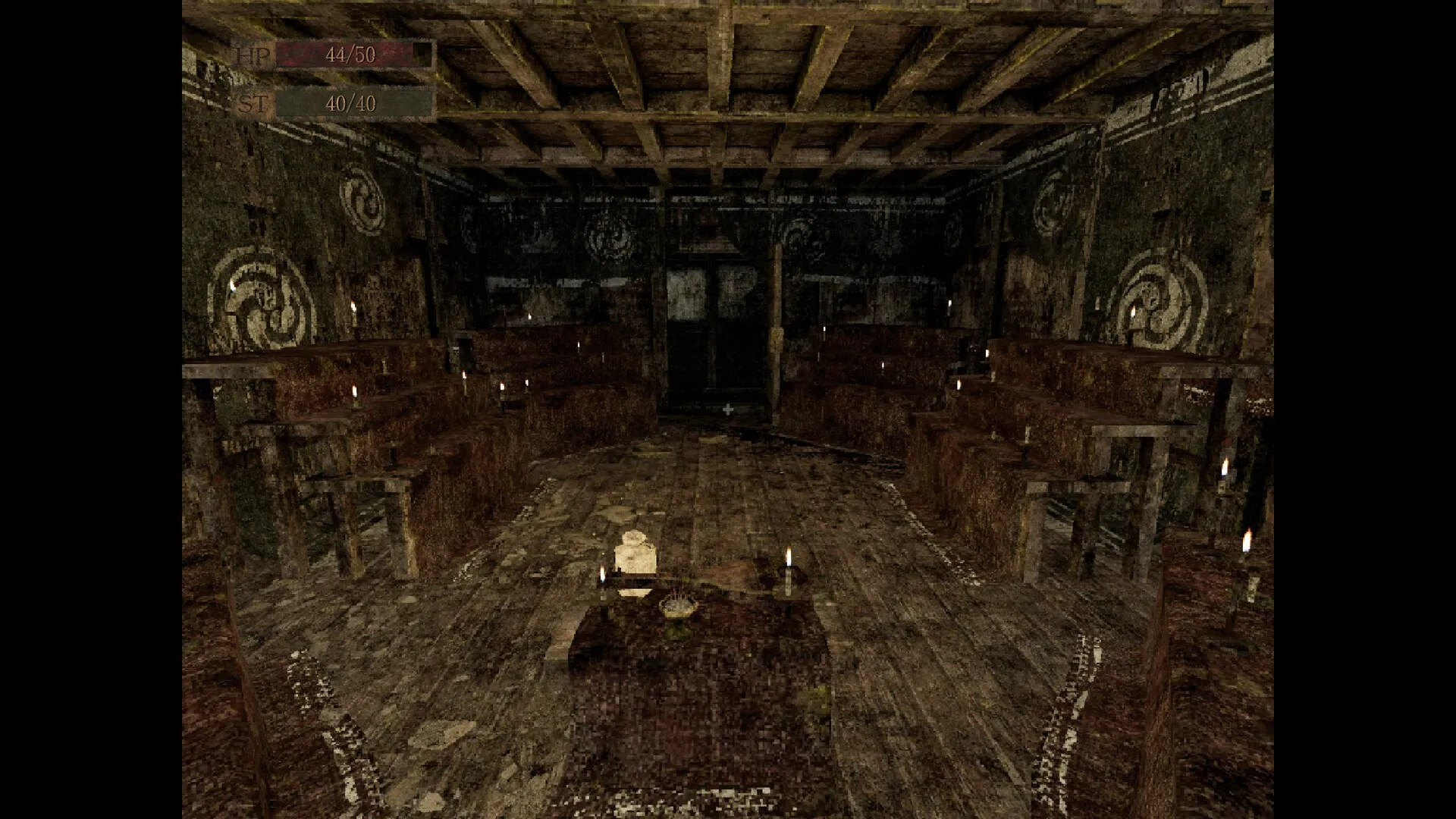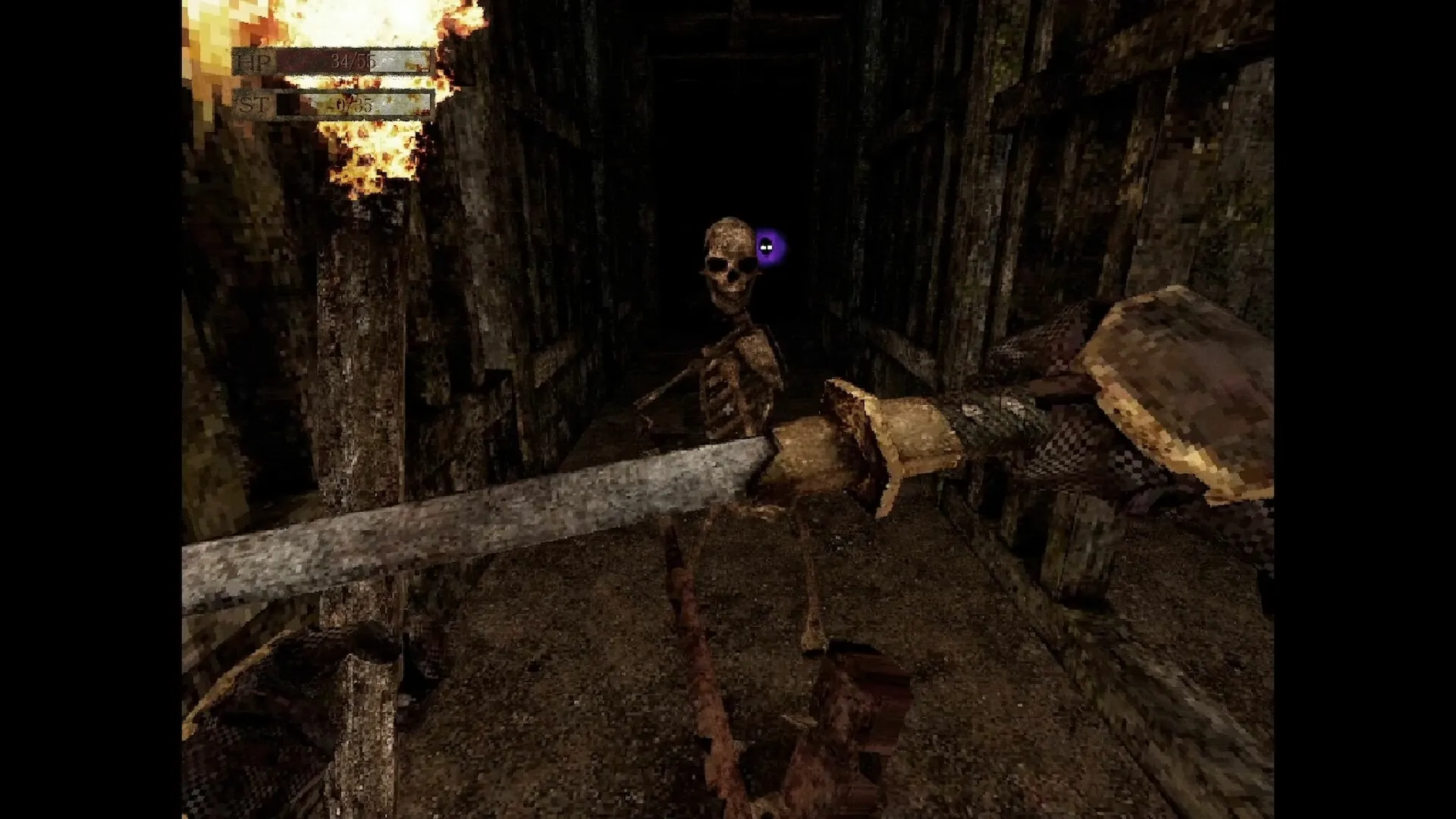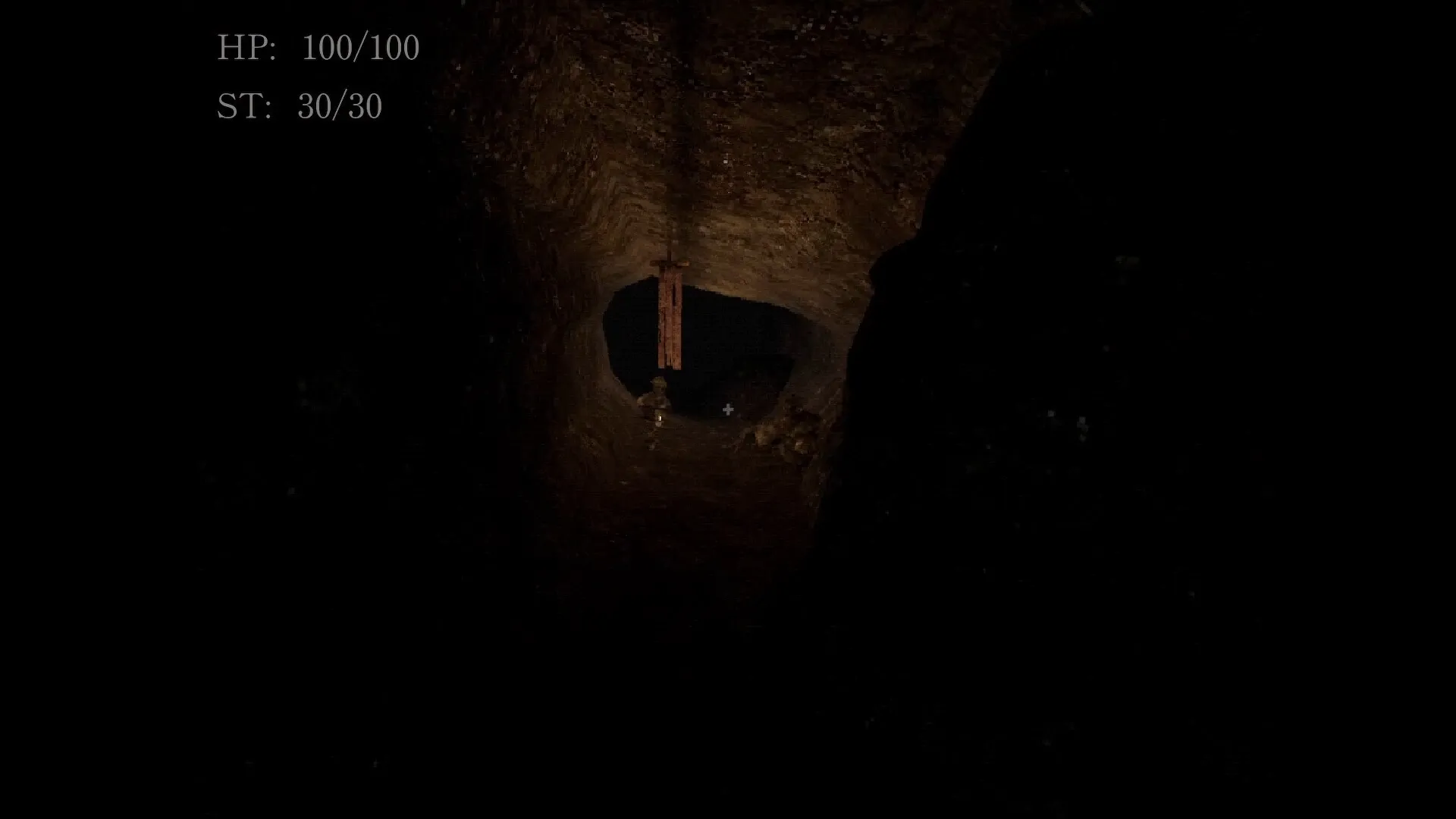Labyrinth Of The Demon King thrusts players into a grim vision of feudal Japan, a land caught in the “Age of Dharma,” characterized by widespread war, devastating famine, and the oppressive presence of demonic entities. You take on the role of a lone ashigaru, a humble foot soldier, the sole survivor of a brutal ambush that claimed your lord and fellow soldiers.
Your singular, desperate motivation is to exact vengeance upon the titular Demon King. From its outset, the game establishes an immediate atmosphere of profound oppression and pervasive danger, signaling a deeply challenging quest.
This stark and focused experience, the work of developer J.R. Hudepohl, aligns it with classic dungeon crawlers and survival horror titles, presented through a lens of retro-inspired action. The initial tone is one of an unforgiving, mysterious, and darkly steeped ordeal.
Echoes of a Forgotten Era: Visuals and Soundscape
The aesthetic presentation of Labyrinth Of The Demon King is a very deliberate homage to the early period of 3D graphics, reminiscent of the mid-1990s console generation, particularly the PlayStation era. Its visual style is defined by murky, light-absorbing textures, “wobbly” environmental geometry that contributes to an unstable feeling, and intentionally low-resolution character models constructed from chunky pixels.
The color palette is frequently dark and oppressive, with many surfaces appearing caked in a “brown-grey ooze,” reinforcing a pervasive sense of decay and filth. Technical aspects common to that older period, such as a 4:3 aspect ratio and heavy dithering effects, are employed to enhance the retro authenticity.
This graphical choice transcends mere nostalgia; it renders adversaries inscrutable, their forms indistinct and “fetid,” which genuinely heightens the horror. The game exudes an unsettling “homebrew” or “forbidden” sensibility, almost as if it’s a recovered artifact from a bolder, rawer past.
Complementing these visuals, the sound design is instrumental in crafting the game’s oppressive mood. Atmospheric and environmental sounds are paramount: the player will often find themselves straining to discern their own cautious footsteps from the creaks, distant moans, or other unsettling noises that might herald an unseen enemy. This ambiguity serves to keep one perpetually on edge.
There is a notable minimalism in the use of a traditional musical score; only sparse strings or bells occasionally break the silence. This absence of continuous music significantly amplifies tension and the acute feeling of isolation within the game’s hostile, twisting passages, culminating in a bleak, depressing, and claustrophobic experience designed to foster anxiety and dread.
The Weight of Steel and Shadow: Core Gameplay Mechanics
Interacting with the world of Labyrinth Of The Demon King involves methodical exploration of its perilous environments and engaging in its deliberate, often punishing combat system. Players will find themselves navigating four major interconnected areas, frequently feeling lost within their confusing, maze-like structures.
The discovery of maps offers some guidance, but often one must proceed without them, facing numerous locked or jammed doors and seeking out hidden paths. Occasional outdoor sections provide only a brief change of scenery from the largely claustrophobic interiors. The fundamental gameplay loop requires significant patience and keen observation.
Combat is characterized as a slow, measured, and melee-focused engagement where precise timing is crucial. Stamina management is of critical importance. Initially armed with a broken katana, every swing, ill-timed dodge, or particularly, repeated dodges within a brief cooldown window, will rapidly deplete the stamina bar, and exhaustion leaves the player exceptionally vulnerable. Essential combat actions include basic attacks, the strategic deployment of a kick to stagger opponents and create openings for attack, and a parry system that demands a tight window for successful execution.
A diverse arsenal becomes available over time, including the starting katana, an otsuchi (a very heavy hammer), a Great Dao (a massive sword), naginatas, axes, spears, and even a rifle, each with distinct properties such as attack speed and stamina consumption, and all are upgradable. Talismans offer various offensive and defensive buffs, though their utility can sometimes be overlooked in the heat of frightening encounters.
Players will confront “repulsive yokai” and “maddened figures,” each presenting unique dangers. Notable among these is the “Nuribotoke,” a persistent stalker-type enemy whose presence evokes the pursuit antagonists seen in titles such as Resident Evil, adding a constant underlying pressure. Puzzles, while not exceedingly numerous, typically involve backtracking and careful searching for clues often found within scrolls.
These scrolls also serve as vehicles for delivering unsettling lore, including disturbing descriptions of the Buddhist Eight Hells. Player progression is achieved by upgrading health and, most critically, stamina, alongside finding and improving weaponry. The game features a shrine-based save system, akin to the “bonfires” in FromSoftware’s King’s Field or Souls series; death results in a return to the last visited shrine, with most enemies respawned. Learning enemy attack patterns and recognizing when to disengage and flee are vital survival strategies.
Enduring the Demon King’s Gauntlet: Challenge and Level Design
Labyrinth Of The Demon King presents, particularly in its opening hours, a “cruel” and “miserable” trial. It provides minimal guidance beyond a rudimentary combat tutorial, expecting players to learn through repeated failure. The early stages of the game are a significant test of one’s patience and capacity to maintain composure during terrifying and often overwhelming encounters.
Many might feel an urge to abandon the quest, yet a distinct shift in experience often occurs. As the player begins to grasp the combat nuances – the vital importance of the kick maneuver, for example – understand the rhythm of the save system, and appreciate the strategic value of tactical retreat, initial frustration can transform into a deep, almost obsessive engagement.
The design of the game’s world itself is a major contributor to its challenge. Players will navigate “illogically twisting halls” and “non-descript rooms.” The aesthetic is intentionally oppressive and can feel monotonous, with surfaces appearing “caked in unspecified brown-grey ooze” and certain doorways disturbingly blocked by “mysterious breathing gore piles.” Despite this visual uniformity in some areas, dedicated players may find themselves developing a surprisingly accurate mental map of the sprawling, interconnected environments.
The first-person perspective, coupled with narrow corridors, effectively cultivates a potent sense of claustrophobia, ensuring the player is constantly wary of what might lurk just beyond their limited field of vision. The game is clearly engineered to be disorienting and to induce anxiety. This inherent difficulty, however, can begin to feel “fair” once its underlying mechanics are better understood.
The challenge may lessen somewhat by the mid-game, a result of growing player skill, increased familiarity with enemy behaviors (such as those of the relentless “Nuribotoke” stalker), and crucial upgrades to health and stamina. A powerful sense of satisfaction arises from finally deciphering a cryptic puzzle or uncovering a cleverly concealed secret passage that had previously seemed insurmountable.
A Relic Reimagined: Lasting Impressions
Labyrinth Of The Demon King successfully captures the demanding spirit of early 3D dungeon crawlers and survival horror, recalling the oppressive atmosphere found in pioneering titles like FromSoftware’s King’s Field series. It masterfully uses its chosen retro visual style not merely as a nod to nostalgia, but as a functional tool to construct a genuinely potent and “weird horror” experience.
A palpable sense exists that this is a distinct and singular creation, an impression further solidified by the knowledge that it is predominantly the work of a single developer, J. R. Hudepohl. This focused development approach allows for an undiluted, perhaps even obsessive, quality to shine through in its design.
This game will most profoundly connect with players who actively seek out demanding challenges, who value a thick, pervasive atmosphere in their horror games, and who find enjoyment in methodical, tension-filled exploration. A certain fondness for the particular aesthetics of early 3D adventures is almost a prerequisite for full appreciation.
The experience it offers is undeniably intense; a significant sense of relief upon finally reaching its conclusion is often matched by the grim satisfaction of having successfully navigated its treacherous, forsaken world. It stands as a notably memorable and potent offering within its specific, demanding subgenre of horror gaming.
The Review
Labyrinth Of The Demon King
Labyrinth Of The Demon King offers a brutally challenging, authentically retro descent into a nightmarish feudal Japan. Its oppressive atmosphere and demanding mechanics will test the most seasoned players. While its deliberate clunkiness and steep difficulty curve make it a niche offering, those who persevere will find a uniquely unsettling and rewarding horror experience. It's a potent, singular vision that lingers long after the ordeal ends.
PROS
- Intensely atmospheric retro horror presentation.
- Deeply rewarding for patient, dedicated players.
- Unique and unsettling enemy and world design.
- Strong sense of accomplishment upon overcoming its significant challenges.
CONS
- Extremely punishing initial difficulty curve.
- Deliberately slow and sometimes clunky-feeling controls.
- Oppressive and visually monotonous environments can become fatiguing.
- Niche appeal; not suited for players seeking accessible or fast-paced action.



















































